As the owner of an EV with not a lot of range, I constantly find myself dealing with range anxiety and having to jump into another car for longer commutes or trips. But I am also very aware this is not a system that would work for most people, so I genuinely think that the Plug-in Hybrid Electric Vehicle (PHEV for short) is a great solution, allowing drivers to do their daily commute in EV-only mode while still having a car they can use for the longer trips, all of that with little to no range anxiety. So enter the Compass 4XE, one of Jeep’s offering in this new, hot segment, one that I was looking forward to trying out for quite some time.
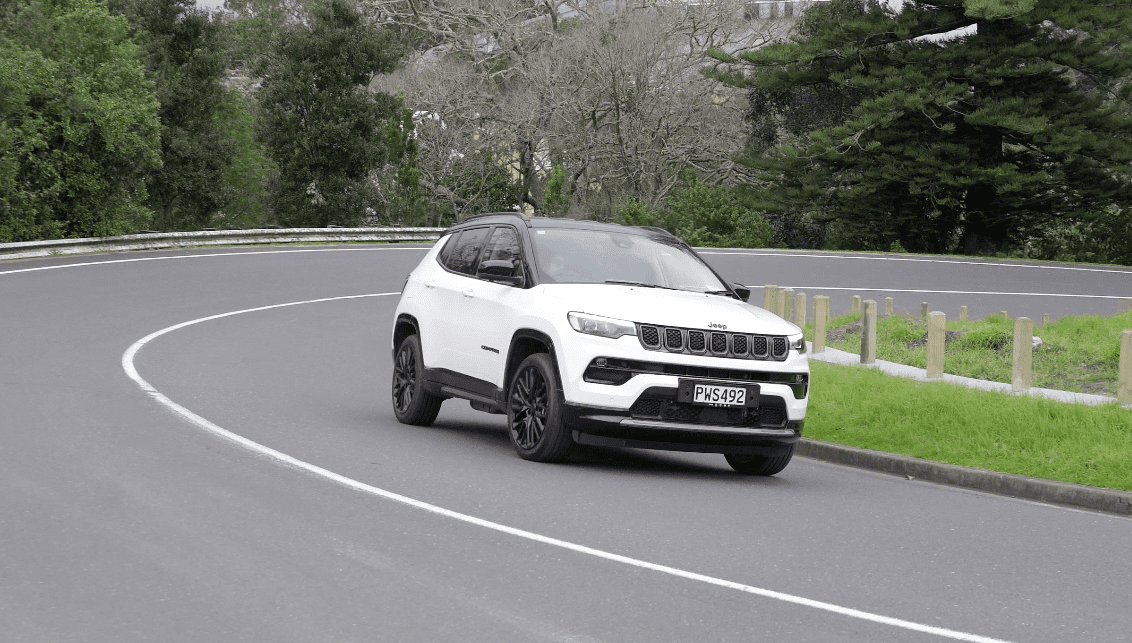
The Compass is Jeep’s largest unibody offering (the other one being the Renegade), and has always had more urban pretensions than those of a full-fledged off-roader such as Jeep’s ladder frame counterparts. At 4.4m of length, it strikes a good balance between bringing a good amount of interior space and storage while still not feeling too big for the city crawl. And now, with an electric motor added to the rear wheels, not only does it bring the advantages that a PHEV drivetrain has, but it also gives the Compass four wheel drive. A win in all fronts if you ask me.

My time with the car started when Matthew and I met to shoot the review for the YouTube channel, which will be available very soon. Given I knew I would have a bit more time with the car, I let Matt start driving, and that afforded me some time to check around for materials and build quality and play around with the revised tech. I don’t want to spoil too much, but these are the two places where I saw the biggest improvement over the previous generation. The new design brings the Compass upmarket and separates it more from the Renegade, and the better materials afford it a quieter ride, even more evident when driving around in silence.

Due to the car’s “split personality” awarded by the electric powertrain with four wheel drive, we decided to start our review right in busiest part of the city to see how it would handle the day-to-day bumper traffic. Clicking the “Electric” button on the dashboard is enough to put the combustion engine to sleep and leave everything in charge (pun intended) of the rear axle. And it does a great job at what a city car will be asked for, to the point that it got me questioning the quoted 44kW of power of the motor. That doesn’t sound like an impressive figure, even more so when trying to lug around almost 2 tonnes, but in the 0-50km/h city sprints the 4XE feels nippy and way better than the older ICE motors this lineup used to have in the past.

After that initial section of the review, we decided to go onto the motorway to shoot some drive-by footage we could use for the video. Flicking it from “Electric” to “Hybrid” was our way of telling the car that it was then in control of when to use each motor. Surprisingly enough, up to motorway speeds, the electric motor did the most of the work, and the handover to the ICE powertrain was smooth, with the shifts of the 6-speed automatic gearbox being almost imperceptible. There is a separate drive mode selector Jeep calls the Select Terrain system, and moving it from Auto to Sport forces the engine to stay on all the time and holds gears for a little longer, but doesn’t make the car feel much faster or engaging.

Speaking of the combustion engine, under the bonnet is the Multiair, a 1.3 litre turbocharged 4 cylinder that puts out 132kW that power the front wheels. Back in my home country of Brazil, this engine has become quite popular for powering many other vehicle in the Stellantis group, albeit none paired to the electric motor we see here. It’s nothing too fancy, but it gets the job done well and will bring the Compass from a standstill to 100km/h in 7.3s. I might be projecting, but I sometimes got the impression it sounded like a refined diesel engine, which I think contributed to the vehicle character (but maybe not so much to its green credentials).
The short days meant that as soon as we were finished filming the review, Matt and I parted ways, but I kept the keys to the Compass. I then drove it home and put it to charge with one goal in mind: to drive the two following days as efficiently as I could to see if I could match the advertised combined fuel consumption of 2L/100km. The charging port is “press to open” and the cable is easy to deal with, but the charging speed of 2.3kW when using a 3 pin socket is not the best, so a full charge will take you around 5 hours. You can bump it up to 7.4kW with a quick charger, but if charging overnight at those slower speeds fits your lifestyle, I would stick to that. Just another of the advantages the PHEV powertrain brings you.

Fast forward to the next day and I had a 44km commute in peak Auckland traffic hour. Sigh. I started by checking the Compass was at 100%/50km of range indication and then putting the cable away, except the car wouldn’t let me detach it from the port. I trying turning on Accessory, Ignition, only to then realise I had to use the door unlock button (as in central locking, even though the car was fully unlocked) to finally hear the charging nozzle lock disengage. There must be a setting for it, and is also something you get used to when owning the car, but definitely caught me off guard. Once on the road, I turned on my favourite features in any car: heated surfaces. The Compass 4XE is sold in S spec here in New Zealand, which offers heated and ventilated seats and a heated steering wheel, the latter having its activation button on the passenger side due to a limited RHD conversion effort. But all of these features work great and make the drive much more comfortable while eating less of the range than using the climate control.
Once on the road, I let the adaptive cruise control handle the most of the traffic. When going up a steeper climb, the car felt like it could use an extra push, so it automatically switched to Hybrid mode and used the combustion engine’s assistance. And there went my goal of driving all those 44kms in pure EV power, even though I used petrol for less than 500m. The car’s decision made sense, but shows the 44kW motor can sometimes require a bit of help, and that if you want to drive 100% electric, you might have to take over from the autonomous assistance systems sometimes.

It was also during this drive that I got to explore and configure some things to my liking. The convenience of having wireless Apple CarPlay and an induction charger cannot be understated – having your maps and music handy while getting a full charge, all without a single cable in sight is something that always gets me. And speaking of music, there’s the Compass’ Alpine sound system, which is also a highlight. It has good clarity but it was the weight of the sound that convinced me. I always appreciate a car with a great sound system and this would be a must in a Compass of my own.

The car managed smooth and quiet driving in most of my commute, and is made much better with the electrification of one of its axles. It is a great city car, and didn’t look out of place in my office’s carpark. On the way back, I stopped at a park for some pictures, where the constant rain had made the access into a muddy pathway that put me into “When in a Jeep…” mode, so I flicked the Select Terrain switch into Sand/Mud mode and tried to cross the wet grass and muddy rut. It again kicked the ICE engine into functioning and even climbed the revs up a bit, all while turning off emergency braking and traction control. And as soon as the rear wheels touched the loose surface, they spun freely and had little to no traction. Even though the powertrain integration seemed good and could provide the Compass with some decent trail manners, the Eagle F1 tyres are probably not the best choice for off-roading. But take my input with a big pinch of salt, I’m no off-roader!
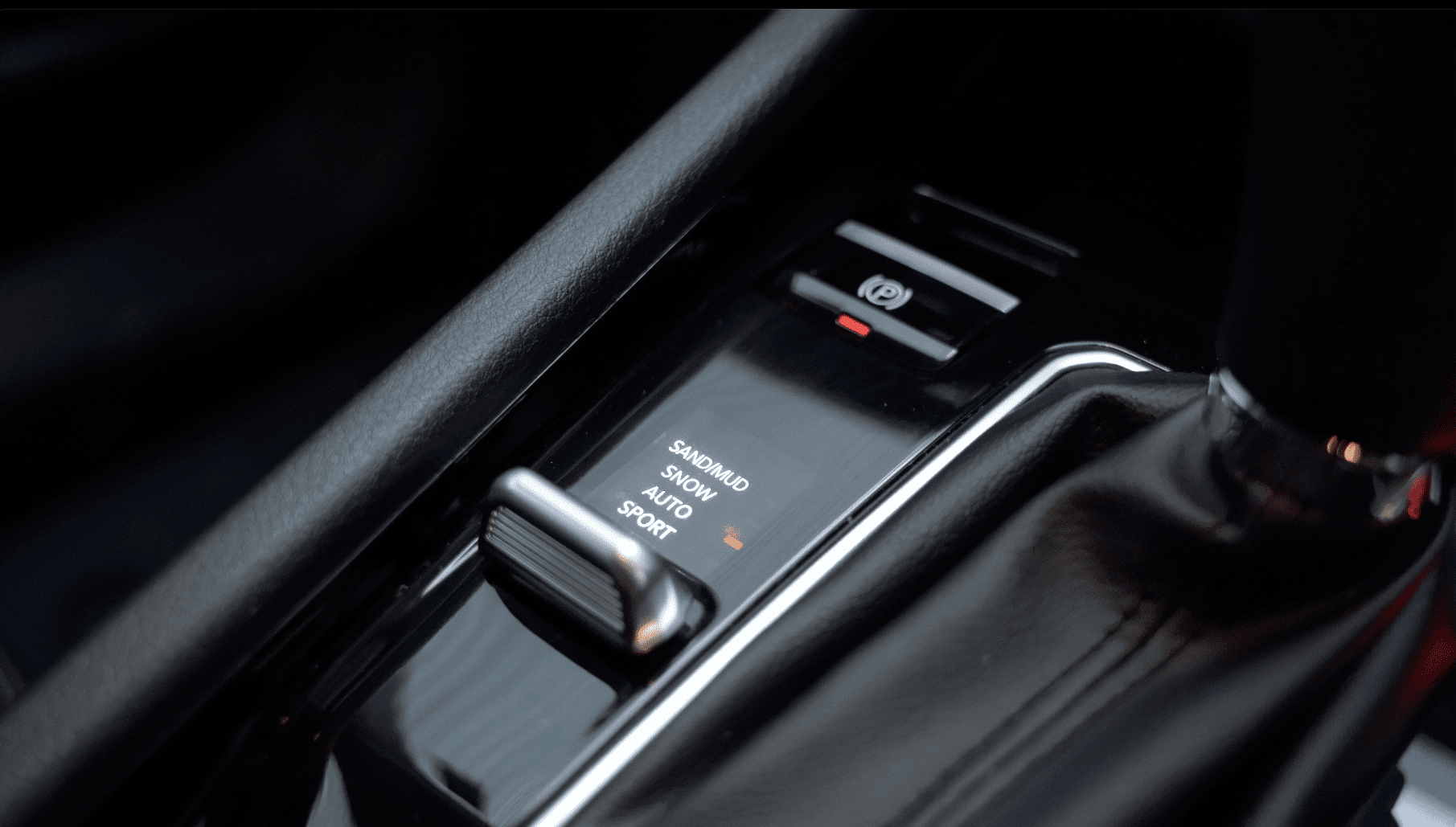
I eventually made my way back onto the road, and had to stop on the shoulder to turn the safety systems back on, as bringing the car back to Auto does not enable them automatically. At the end of this day my Leaf also needed a top up, so I had to back up my driveway so the Compass could reach the other power outlet. It is a steep and very narrow driveway, and a certain point the car realised the EV power was not going to be enough to reverse up it. The combustion engine sprung to life with no warning, and as the car prepared to engage it, the transmission possibly decoupled and the car crept forward, even with me depressing the accelerator. It led to a small scare and a quick press on the brakes, with the (very loud) parking sensors telling me I was very close to trading paint with the wall. Phew.
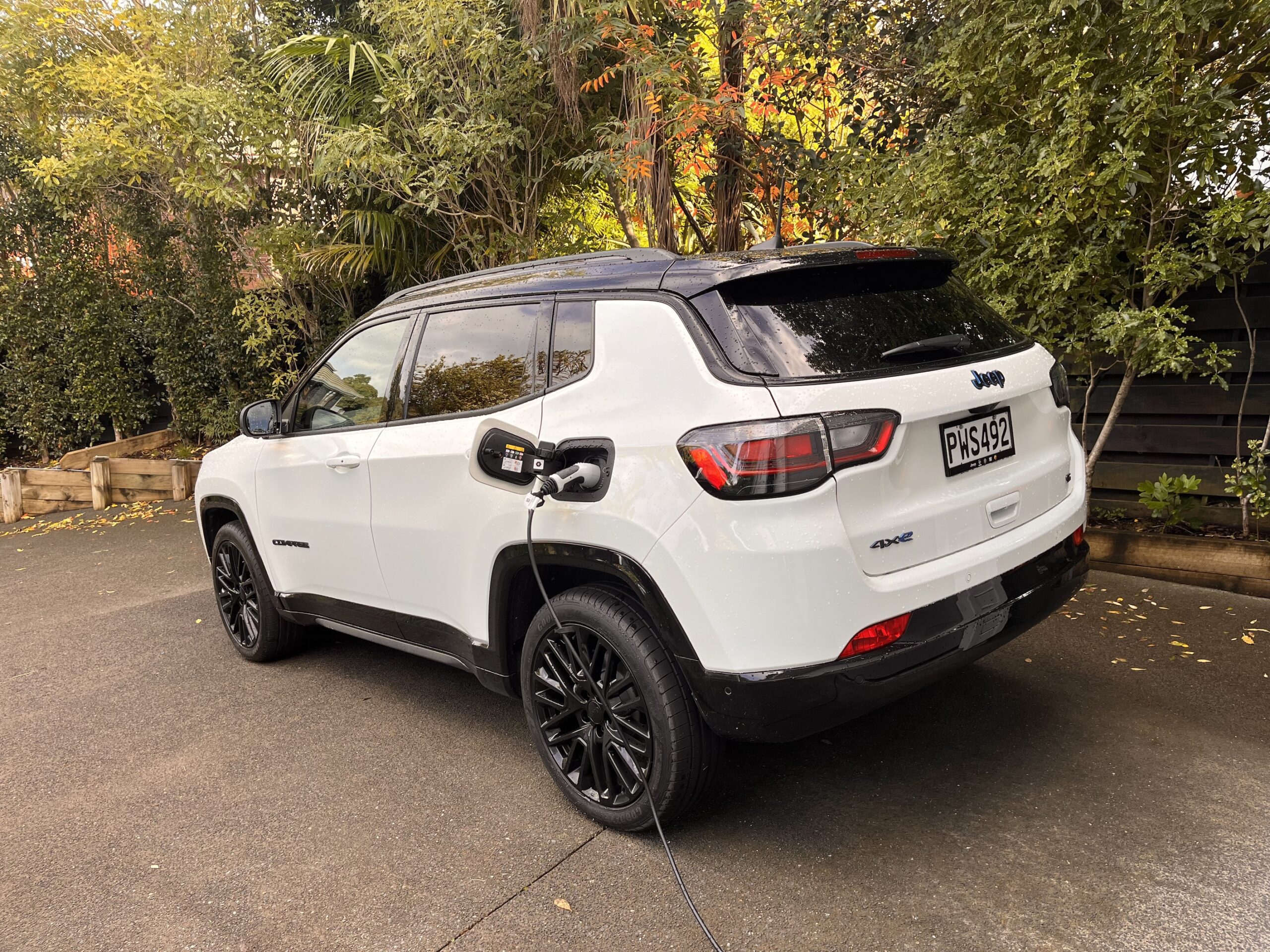
The next day, my destinations were different but the goal was the same: explore more of the car and squeeze every last EV km I could. Having three onboard didn’t change the car dynamics in any perceivable way, and got us confirmation that the rear space is more than adequate, and even has a 40/20/40 split. The centre screen provided a bit of entertainment and offered good graphics and responsiveness. It is a good solution now, enough to be ahead of some competitors, and the “Iron Man-esque” layout of the gauge cluster (thanks for the reference, Matt) is crisp, quick and has an impressive level of customisation and information. Browsing around for details, we even found some easter eggs throughout its body, from a gecko on the wiper cowl to a US flag in the interior C pillar.
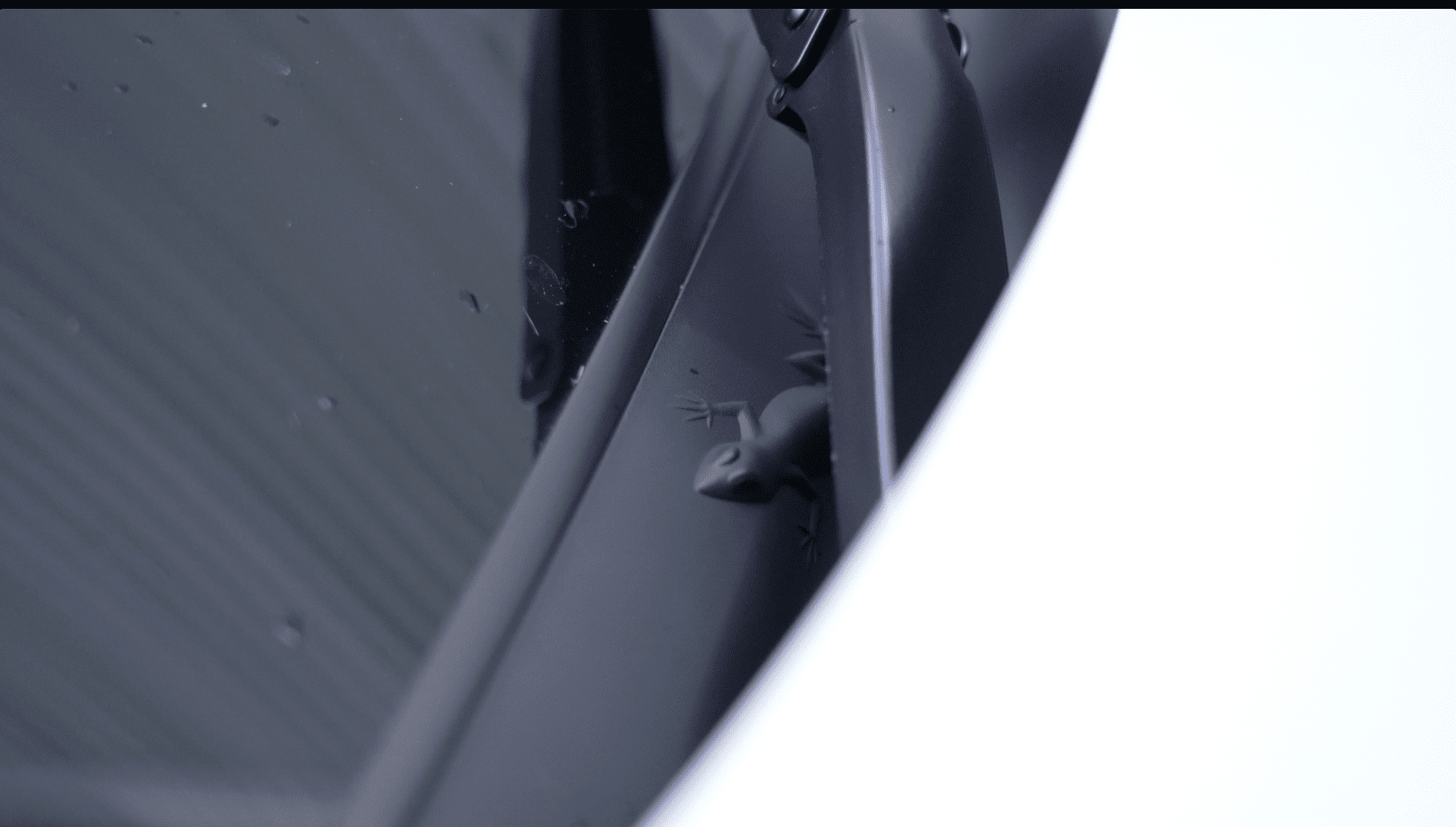
The longer leg of this last commute was completed in hybrid mode, and it was at the end of it that I was able to finally tally up all the consumption figures, that led to an indicated 2.3L/100km. A great number indeed, but that comes with the obvious disclaimer that I charged the car every night, and drove the battery down to its last percents every chance I could. It is a good summary of what life with a PHEV can be like: My commute can easily be handled in EV-only mode (until the battery started to slightly degrade, that is), while still having a completely capable car for the longer trips. If your mechanical sympathy doesn’t get at you when the ICE powertrain wakes from its slumber to quickly climb to 3500rpm, then all the better.

The Compass is indeed a great car, and now I get more of why it is such a success in my home country. Although not exclusive to the 4XE, the new interior and tech bring the car up a notch and turn it into a more special and comfortable space. I stand convinced PHEVs are great one-car solutions to those looking for the benefits of an EV while less of the compromise, to the point that if I were not a car hoarder, I’d consider jumping into the bandwagon. Thanks for reading and stay tuned for more care reviews, electrified or not!




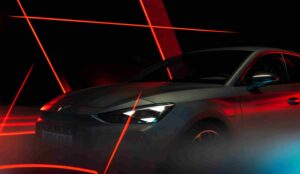

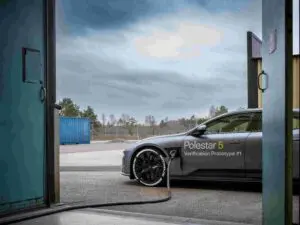


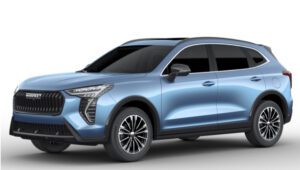

2 Responses
Thanks for the detailed review. Appreciate, if you could cover more on charging options for Jeep Compass 4Xe at home or at public charging stations. Cables, connectors required and cost associated. One more thing that is controversial is Jeep’s value for money when contenders like BMW ix3 are costing $90-95 k average for a near new on trademe.
Thanks for your comment, Ram!
During my period with the Compass, I charged at home using a three pin trickle charger. With my home’s 8A installation, it would take around 5 hours to get a full charge. Both that cable and a male-to-male variant were provided with our press car. Charging costs will vary on your situation, but considering I pay 31 cents per kWH, I paid around $3.50 every time I charged the car’s 11kWh battery.
The conversation around value for money is really interesting and got us here at Tarmac, too. The iX3 is indeed a solid offering but it’s important to note the PHEVs offer a little bit more flexibility that might them appealing to a bigger group of potential buyers.
Thanks again!
Harry